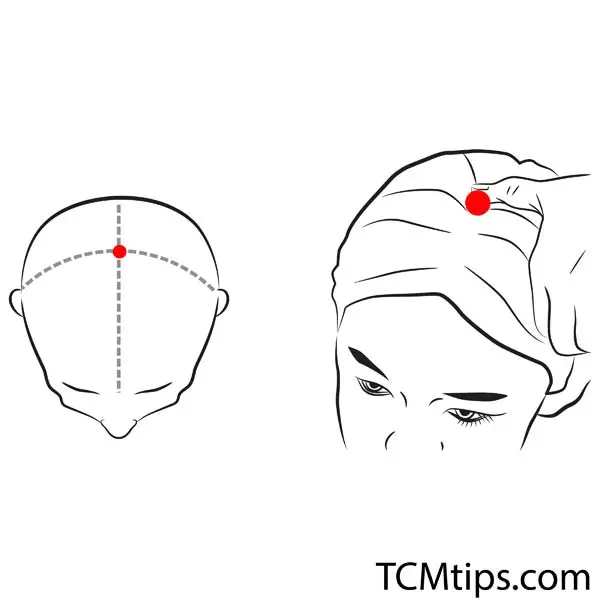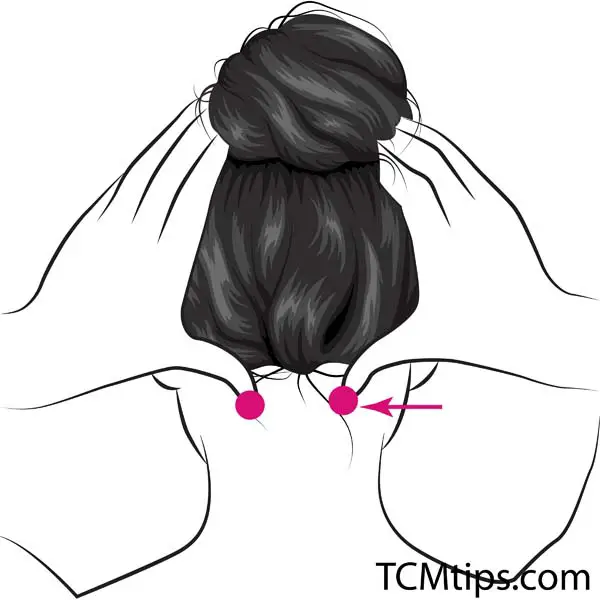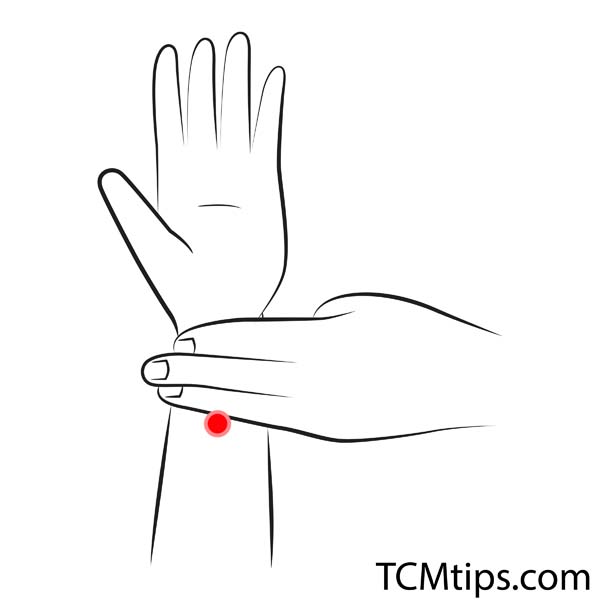A brain aneurysm is a health disorder that mostly affects people after the age of 40 but can affect young people and children too. The main symptom of a ruptured brain aneurysm is a sudden and severe headache that can be accompanied by nausea, vomiting, stiffness in the neck, seizures, blackouts, and heavy eyelids. Acupuncture for a brain aneurysm is aimed at mitigating the neurological damage caused by cerebral vasospasms after a cerebral hemorrhage has occurred.
What Is A Brain Aneurysm?
Brain aneurysms are small lumps that appear in the brain’s blood vessels due to thinning artery walls. They look like small berries steaming from the weakest areas in the blood vessels that can leak or rupture, causing a hemorrhagic stroke. Brain aneurysms have a bigger tendency to appear in the arteries at the base of the brain, and when the brain aneurysms leak, causing a cerebral hemorrhage, it usually happens in between the layers of thin tissues that cover the brain.
What Is The Cause Of A Brain Aneurysm?
In Chinese medicine, the thinning of the blood vessels is caused by insufficient Zheng Qi, or the global Qi of a person. In adults, this usually happens gradually and is related to the consumption of the Kidney’s essence, which becomes insufficient, causing the system to become weak. Zheng Qi becomes insufficient due to factors like:
- Old age
- Constitutional weakness
- Chronic illness
- Tiredness and exhaustion
- Worry and excessive tiredness (both physical and mental)
- Emotional disturbances and psychic factors (especially anger and rage)
Another common cause that can lead to the exhaustion of Qi and the systematic weakening is an unbalanced diet where greasy foods, sweets, and alcohol are abused, and/or in which there is no time regularity or control in the amount ingested. The treatment for insufficient Zheng Qi in TCM consists of reinforcing it to increase cerebral blood flow and activate the natural homeostatic response of the body with the use of acupuncture for brain aneurysms, which is similar to acupuncture for a brain tumor.
Does Acupuncture Cure Brain Aneurysms?

It’s important to mention that most brain aneurysms do not rupture or cause any health problems or symptoms. Due to the risk of these bulges eventually leaking and causing an intracerebral hemorrhage, they are considered dangerous. The underlying cause of brain aneurysms is the thinning in the lining of the blood vessels. Acupuncture for a brain aneurysm has been shown to be efficient in treating cerebral vasospasm after intracerebral hemorrhage.
A case study carried out on 60 patients who had ruptured aneurysms showed that acupuncture for brain aneurysms was efficient in releasing the peak of cerebral vasospasm, a common symptom that happens days after intracerebral hemorrhage. Cerebral vasospasm is the main problem after a stroke has happened. It is when the arteries that carry blood to the brain narrow and hinder proper cerebral blood flow.
There are also scientific studies carried out in China showing that traditional acupuncture points for the brain and electroacupuncture in specific points exert a neuroprotective effect in cases of ischemic stroke by measuring the biochemical pathway by which this happens. Another study published by Chinese researchers indicates that acupuncture promotes the proliferation of neural stem cells, besides having positive effects in the process involving the growth of new blood vessels from pre-existing vessels.
What Are The Acupressure Points For Brain Aneurysms?
Brain aneurysms are a serious health concern due to the higher risk of subarachnoid hemorrhage. People in the age group of 35-60 have a higher chance of acquiring it. Currently, there is no cure for this condition, and surgery for brain aneurysms is only done in extreme cases since surgery in the brain can easily have complications such as brain damage.
The main complication patients with aneurysms face after surgery is the reduction of nitric oxide production, which is a soluble gas synthesized in the endothelium tissues of the vascular cells inside the whole body that promotes vasodilation. On top of this, it has been observed that vasoconstrictors get activated post-surgery in patients with a brain aneurysm. Due to this, post aneurysm surgery patients tend to suffer from cerebral vasospasm, which is a condition in which the arteries in the brain get constricted, and the blood flow diminishes.
Researchers in different laboratories have explored acupuncture in certain acupoints, and to date, there is several scientific evidence explaining how certain acupoints have specific effects on the physiology of the brain and body. Specifically, in cases of brain aneurysms, it has been demonstrated that some acupuncture points can be used to mitigate the complications related to stroke and surgery.
Acupoint: GV-20 (Other Names: The Governing Vessel-20/Bai Hui/Hundred Convergence)

Baihui, as this acupoint is also called, can be found on the midline of the head by drawing a straight line from both ears up.
This is one of the acupressure points for brain stimulation because, traditionally, GV-20 is a command acupoint for all brain-related issues. It’s referred to as the “sea of marrow” in Chinese medicine, in reference to the Brain. This acupoint has been shown to help down-regulate cerebral vasospasm peak after embolization of ruptured aneurysms. This is an acupoint also used in acupressure for better vision.
The acupressure at this point can be done by pressing it for a few seconds and releasing intermittently for about three minutes. You can repeat this procedure as you wish.
This is one of the acupressure points for brain fog.
Acupoint: GB-20 (Other Names: Gallbladder-20/Feng Chi/Wind Pool)

You can locate GB-20 close to the base of the skull, on the hollow area by the end of the occipital bone on both sides of the beginning of the cervical spine.
Fengchi is the most important acupressure point to treat headaches and dizziness of any cause. It’s considered one of the acupuncture points for concussion. GB-20 is a major acupuncture point with many uses and is very efficient in the treatment of headaches. It also serves to alleviate pain in the neck, back pain, migraines, and heaviness of the head.
Press this point for a few seconds and release intermittently for about three minutes. Repeat this procedure as you wish.
GB-20 is included among the acupressure points for cataracts as well.
Acupoint: ST-36 (Other Names: Stomach-36/Zu San Li/Leg Three Miles)

Find ST-36 Zusanli below your knee, one finger breadth lateral to the anterior crest of the tibia.
In classical Chinese medicine, it’s mentioned that this point can treat all diseases. Daily moxibustion in this acupoint is said to extend the lifespan and helps to maintain health, being specially indicated to people above thirty to send energy to the eyes. Zusanli is broadly utilized to lower blood pressure, as well as sympathetic nervous tension. Due to this, ST-36 is one of the acupressure points for stomach inflammation.
In the case of patients who have gone through an intracerebral hemorrhage, it has been reported that stimulation at ST-36 lowers blood pressure by increasing the activity of endothelial nitric oxide in the arteries of the brain. For this and other reasons, it is also one of the acupressure points for brain injury.
Apply firm pressure on both sides, using your fingers to massage this acupoint for about three minutes vigorously.
Acupoint: PC-6 (Other Names: Pericardium-6/Nei Guan/Inner Pass)

Neiguan can be found on the inside of the wrist. With the palm facing up, it is located between the wrist and the base of the arm, and between the two tendons that continue from the center of the wrist, by moving three fingers of the hand.
This acupoint helps in the treatment of ruptured brain aneurysms by improving endothelium-dependent vasodilatation. PC-6 has also been shown to reduce arterial stiffness in hypertensive patients, besides being known to reduce ischemic heart damage and it also lowers blood pressure and reduces nausea and vomiting. It’s among the acupressure points for atrial fibrillation.
Press the left and right acupressure points for about 10 seconds, releasing them intermittently. You can do this procedure for a duration of about three minutes.

Try our Anti-Aging Gua Sha Tool designed to bring out your skin’s natural glow.
Best Gua Sha Product- Anti-Aging: The tool is designed to target 11 specific aging signs such as wrinkles and sagging skin. By following the 7-step routine, users can improve skin firmness and reduce fine lines naturally.
- Enhances Skincare Routine: It works effectively with serums and lotions, boosting absorption and efficacy of skincare products.
- Visible Skin Improvement: Users can expect a smoother complexion, reduced puffiness, and a more youthful appearance.
 P. Sze
P. Sze 

















